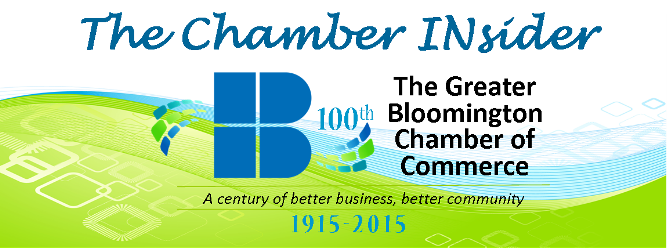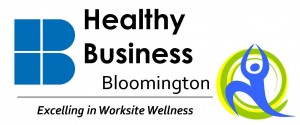Almost two years ago, The Greater Bloomington Chamber of Commerce launched its young professional program hYPe: Helping Young Professionals Excel. From its inaugural 2011 event where 125+ young people under the age of 40 attended, to the group of hYPe members who volunteered at last month’s Taste of Bloomington, this has been and is an organization about involvement. Each month hYPe members attend personal or professional development events where they learn new skills and make new connections with peers. As important, the programming of hYPE helps to create a support structure that builds leaders. Always, these young professionals are involved in the learning process – becoming better employees, stronger leaders and forging stronger bonds within their community.
This was exactly the hope when hYPe was launched.
The Chamber‘s Board of Directors recognized the importance of engaging our next generation of leaders to help generate a greater pipeline for talent within our community. To underscore their commitment to hYPe and its mission, the Board’s nominating committee selected the hYPe Steering Committee Chair – Faye Jameson, to serve on the Chamber’s board of directors. For a young professional to play an active role on a board filled by some of the community’s strongest leaders is an incredible opportunity. But, the opportunity to have a “fresh voice” of a young leader on the Chamber Board is equally as important.
You get a very different voice at a table – whether it’s in the boardroom or as part of your leadership team – when there is someone under 40. So many believe that our under 40’s only bring an understanding of technology since most all have grown up in a world where apps, social networks and smart phones are the Millennial generation’s versions of Sesame Street and Mr. Rogers. But, this limited thinking is…well, limited. Our under 40’s bring so much more.
A young professional’s fresh perspective, insight as to what resonates with their age group, willingness to try new ideas and out-of the-box thinking can benefit any organization or any board. Our world is changing at a rapid rate and our young professionals are skilled at navigating a rapidly changing world. These are individuals you want to have at the proverbial “table”.
According to one study, less than 2% of nonprofit board members are under 30 years old. In contrast, 57% of nonprofit board members are 50 and over. All they need is a chance to utilize their skills…But first, they need to be asked. I encourage businesses and organizations in our community to look for ways to engage our young professionals in meaningful professional relationships through board service, volunteer task force or committees.
Not certain how to make it happen?
- The first step is to identify and remove any barriers to engaging young leaders. Sometimes this means you have to “break the mold” of what you usually look for from a person when filling these positions.
- If you know and can articulate the value they will bring to your organization, you’re half way there.
- Provide your young professionals with proper expectations and allow them to feel comfortable within your organization.
- Finally, make a commitment to always find room for a young professional to “be at your table.” They have been reared in a world of constant communication and collaboration, so be prepared for the energy and ideas that can be unleashed.
On July 26, The Chamber and our hYPe program will host the “10 Under 40” Awards at the Bloomington/Monroe County Convention Center. If you want to see, first-hand, the amazing young talent and leadership we have in our community, please join us. For more information about hYPe or the “10 Under 40” Awards, please visit www.ChamberBloomington.org or www.hYPeBloomington.org.






